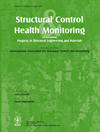
Structural Control & Health Monitoring
Scope & Guideline
Empowering Engineers with Cutting-Edge Insights
Introduction
Aims and Scopes
- Structural Health Monitoring (SHM):
Research dedicated to the continuous assessment of structural integrity using various sensors and data acquisition systems, incorporating techniques such as vibration analysis, strain measurement, and visual inspection. - Control Systems for Structures:
Exploration of active, passive, and semi-active control systems designed to mitigate the effects of dynamic loads on structures, including tuned mass dampers and innovative damping technologies. - Data-Driven and Machine Learning Approaches:
Utilization of machine learning and artificial intelligence in the analysis of structural health data, focusing on predictive modeling, anomaly detection, and damage identification. - Innovative Materials and Sensors:
Investigation of new materials and sensing technologies (like fiber Bragg grating and piezoelectric sensors) that enhance the effectiveness of SHM and control systems. - Numerical and Experimental Techniques:
Development and validation of numerical models and experimental setups for simulating structural behavior and evaluating the performance of monitoring and control systems. - Environmental and Operational Impact Assessments:
Research on the effects of environmental factors (e.g., temperature, humidity, seismic activity) on structural performance and the efficacy of SHM systems.
Trending and Emerging
- Machine Learning and AI Applications:
A significant increase in research applying machine learning techniques for damage detection, predictive maintenance, and real-time monitoring has emerged, highlighting the trend towards data-driven methodologies. - Integration of IoT in SHM:
The integration of Internet of Things (IoT) technologies for real-time data collection and analysis in structural health monitoring systems is gaining traction, facilitating improved communication and data accessibility. - Remote Sensing and UAV Applications:
The use of unmanned aerial vehicles (UAVs) for structural inspection and monitoring is on the rise, showcasing advancements in remote sensing technologies and their application in real-time data acquisition. - Resilient and Adaptive Structures:
Research focusing on the resilience of structures to extreme events (earthquakes, storms) and the development of adaptive systems that respond to changing conditions is increasingly prominent. - Smart Materials and Structures:
Emerging studies on the application of smart materials (e.g., shape memory alloys, magnetorheological fluids) in structural systems demonstrate a growing interest in innovative solutions for structural control.
Declining or Waning
- Traditional Vibration Analysis Techniques:
There has been a noticeable decrease in the emphasis on conventional vibration analysis methods, as newer data-driven and machine learning approaches gain prominence. - Basic Sensor Technologies:
The focus on traditional sensor technologies, such as simple accelerometers and strain gauges, is waning as more advanced and integrated sensing solutions become available. - Static Structural Analysis:
Research related to static analysis without consideration of dynamic effects has diminished, as the field shifts towards more comprehensive dynamic evaluations. - Manual Inspection Methods:
The frequency of publications on manual or visual inspection methods has decreased, likely due to the increasing reliance on automated and remote sensing technologies.
Similar Journals
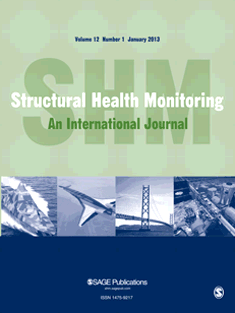
STRUCTURAL HEALTH MONITORING-AN INTERNATIONAL JOURNAL
Pioneering Excellence in Structural Health AssessmentSTRUCTURAL HEALTH MONITORING-AN INTERNATIONAL JOURNAL, published by SAGE PUBLICATIONS LTD, stands at the forefront of interdisciplinary research in the fields of Biophysics and Mechanical Engineering, with an impressive 2023 ranking of Q1 in both categories. Since its inception in 2002, this journal has provided a critical platform for scholars and practitioners to disseminate innovative methodologies and findings concerning the assessment, monitoring, and management of structural integrity across various applications. With a robust Scopus ranking of #28 out of 672 in Mechanical Engineering and #8 out of 152 in Biophysics, the journal underscores its commitment to excellence and relevancy in advancing the science of structural health monitoring. Dedicated to fostering collaboration and knowledge sharing, the journal welcomes contributions that push the boundaries of conventional systems, enhancing safety, efficiency, and sustainability in engineering practices. Researchers, professionals, and students are encouraged to explore the wealth of knowledge this journal offers, as it continues to shape the future of structural health monitoring up to 2024 and beyond.
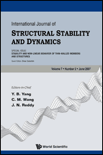
International Journal of Structural Stability and Dynamics
Pioneering Research in Engineering Dynamics.International Journal of Structural Stability and Dynamics is a renowned academic journal published by World Scientific Publishing Co. Pte. Ltd., based in Singapore. With an ISSN of 0219-4554 and an E-ISSN of 1793-6764, this journal serves as a vital platform for disseminating pioneering research in the fields of Aerospace Engineering, Applied Mathematics, Building and Construction, Civil and Structural Engineering, Mechanical Engineering, and Ocean Engineering. It holds impressive positionings within category quartiles—ranking Q1 in Building and Construction and Q2 in other relevant disciplines as of 2023—demonstrating its impact and significance within these scholarly arenas. The journal's Scopus rankings signify its commitment to quality research, with notable percentiles that place it among the top journals in applied mathematics and various engineering domains. As it converges from 2004 to 2024, the International Journal of Structural Stability and Dynamics remains dedicated to advancing knowledge and fostering innovations in structural engineering, making it an indispensable resource for researchers, professionals, and students alike.

Journal of Civil Structural Health Monitoring
Leading the charge in civil structural health advancements.The Journal of Civil Structural Health Monitoring, published by SPRINGER HEIDELBERG, is a premier academic journal dedicated to advancing the field of civil and structural engineering, with a specific focus on the health monitoring of infrastructure systems. With an ISSN of 2190-5452 and an E-ISSN of 2190-5479, the journal has established itself as a leading source of rigorous research, evidenced by its impressive Q1 rankings in both Civil and Structural Engineering and Safety, Risk, Reliability, and Quality categories for 2023. As a widely respected platform, the journal offers researchers and practitioners access to high-impact studies, innovative technologies, and insights into the ongoing efforts to enhance infrastructure resilience. Despite its lack of an open-access model, the journal's content is accessible through institutional libraries, ensuring that a wide audience of engineers and scientists can benefit from the latest advancements. With its converged years from 2011 to 2024, the journal continues to play a vital role in shaping best practices and policy decisions in civil engineering, making it an invaluable resource for professionals, scholars, and students alike.
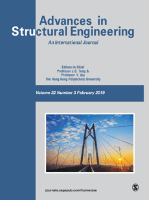
ADVANCES IN STRUCTURAL ENGINEERING
Fostering Collaboration for Sustainable Construction SolutionsADVANCES IN STRUCTURAL ENGINEERING, published by SAGE PUBLICATIONS INC, is a leading journal dedicated to the advancement of knowledge in the fields of Building and Construction, as well as Civil and Structural Engineering. With a solid impact factor and a commendable Scopus ranking (Rank #60 in Building and Construction, Rank #105 in Civil and Structural Engineering), this journal stands at the forefront of academic research, providing a platform for high-quality articles that contribute significantly to the discipline. Covering a range of topics from innovative construction techniques to sustainable engineering practices, the journal aims to foster collaborative dialogue among researchers, industry professionals, and students alike. As of 2023, it boasts impressive category quartiles, ranking Q1 in Building and Construction and Q2 in Civil and Structural Engineering. ADVANCES IN STRUCTURAL ENGINEERING is a vital resource for those looking to stay abreast of emerging trends and groundbreaking developments in structural engineering, promoting an environment of continuous learning and application of best practices. With a convergence of research from 1999 to 2024, the journal not only emphasizes theoretical frameworks but also bridges the gap between academia and practical application in engineering projects.
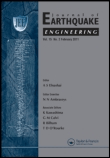
JOURNAL OF EARTHQUAKE ENGINEERING
Exploring the forefront of earthquake engineering.JOURNAL OF EARTHQUAKE ENGINEERING, published by TAYLOR & FRANCIS LTD, stands as a pivotal resource in the fields of Building and Construction, Civil and Structural Engineering, and Geotechnical Engineering. With an impressive Q1 ranking in multiple categories for 2023, this journal is instrumental for researchers, professionals, and students committed to advancing knowledge in earthquake engineering and its practical applications. As a platform that spans the years from 1997 to 2024, it highlights significant contributions to safety, risk, reliability, and quality in engineering practices. While the journal operates on a subscription basis, its highly regarded articles, bolstered by robust Scopus rankings—such as rank #46 in Building and Construction—underscore its credibility and influence in shaping standards and methodologies within the discipline. Promoting innovative and evidence-based approaches, the JOURNAL OF EARTHQUAKE ENGINEERING is essential reading for anyone engaged in the science and technology of earthquake-resistant structures.
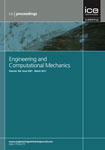
Proceedings of the Institution of Civil Engineers-Engineering and Computational Mechanics
Transforming Ideas into Engineering RealitiesProceedings of the Institution of Civil Engineers - Engineering and Computational Mechanics is a prestigious journal published by Emerald Group Publishing Ltd, dedicated to advancing the fields of civil and structural engineering, as well as mechanics of materials. With an ISSN of 1755-0777 and E-ISSN 1755-0785, this journal serves as a critical platform for disseminating innovative research and practical insights from 2009 through 2024. As part of its commitment to academic rigor, it is categorized in the Q4 quartile for both civil and structural engineering and mechanics of materials, reflecting a unique position in the scholarly community. The journal is essential for professionals, researchers, and students aiming to stay informed on current trends, methodologies, and applications in engineering and computational mechanics. By engaging with this publication, readers gain access to crucial findings that contribute to the advancement of infrastructure and materials science, vital for developing resilient and sustainable engineering solutions.
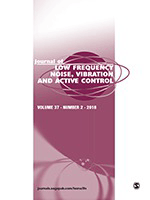
JOURNAL OF LOW FREQUENCY NOISE VIBRATION AND ACTIVE CONTROL
Transforming Challenges into Solutions in Noise ControlJOURNAL OF LOW FREQUENCY NOISE VIBRATION AND ACTIVE CONTROL is a premier peer-reviewed publication, dedicated to advancing the understanding and applications of low-frequency noise, vibration, and active control technologies. Published by SAGE PUBLICATIONS LTD, this journal has established itself as a critical resource in its field, boasting an impressive range of quartile rankings in key academic categories including Acoustics and Ultrasonics, Building and Construction, and Geophysics. With an Open Access model since 2017, it has expanded its reach to a global audience, enabling researchers, professionals, and students alike to easily access cutting-edge research. The journal aims to foster collaboration and innovation, serving as a vital platform for the dissemination of findings that address real-world challenges in noise and vibration control across various engineering disciplines. Residing at the intersection of mechanical, civil, and geophysical engineering, its convergence from 1996 to 2024 ensures a comprehensive repository of knowledge for continued interdisciplinary exploration. For those committed to pushing the boundaries of engineering science, JOURNAL OF LOW FREQUENCY NOISE VIBRATION AND ACTIVE CONTROL stands out as an essential publication that reflects the latest advancements and encourages groundbreaking research.
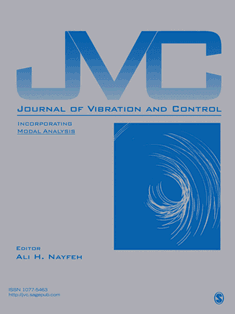
JOURNAL OF VIBRATION AND CONTROL
Elevating Engineering Standards through Vibrational ScienceJOURNAL OF VIBRATION AND CONTROL, published by SAGE PUBLICATIONS LTD, is a distinguished peer-reviewed journal that serves as a pivotal resource for researchers and professionals in the fields of aerospace, automotive, materials science, and mechanical engineering. Since its inception in 1995, this journal has been instrumental in disseminating cutting-edge findings on the dynamics of vibrations and control systems, addressing both theoretical developments and practical applications. With an impressive array of impact metrics—ranking in the top quartile (Q2) across various engineering categories—it ensures that high-quality research is accessible to its audience, fostering innovation and collaboration. Although currently not an open-access journal, it remains influential within its domain, indexing a breadth of topics that bridge fundamental science and engineering practices. Researchers and students interested in exploring the dynamics of materials and structures will find the JOURNAL OF VIBRATION AND CONTROL an invaluable tool for advancing their knowledge and contributing to ongoing discussions in the field.

Ships and Offshore Structures
Exploring New Frontiers in Offshore ResearchShips and Offshore Structures, published by Taylor & Francis Ltd, is a premier academic journal dedicated to advancing research in the fields of mechanical and ocean engineering. With an esteemed ISSN of 1744-5302 and an E-ISSN of 1754-212X, this journal has established a strong reputation, reflected in its Q2 ranking in both the Mechanical Engineering and Ocean Engineering categories, as well as its impressive Scopus rankings. The journal provides a platform for the publication of high-quality, peer-reviewed articles that address innovative design, construction, and operational challenges faced in the maritime and offshore industries. Although the journal does not currently offer open access, its accessibility through institutional subscriptions ensures that it remains a valuable resource for researchers, professionals, and students alike. By fostering interdisciplinary dialogue and disseminating cutting-edge research, Ships and Offshore Structures plays a crucial role in shaping the future of marine technology and engineering practices on a global scale.

Structure and Infrastructure Engineering
Elevating Standards in Civil and Structural EngineeringStructure and Infrastructure Engineering, published by TAYLOR & FRANCIS LTD, is a premier academic journal that serves as a vital resource in the fields of engineering and construction. Featuring an ISSN of 1573-2479 and an E-ISSN of 1744-8980, this journal has established its reputation as a leader in disseminating high-quality research. Since its inception, it has successfully transitioned through converged years from 2007 to 2024, earning a prestigious position within the Q1 quartile across multiple engineering disciplines, including Building and Construction, Civil and Structural Engineering, and Ocean Engineering, among others. Its impact is underscored by impressive Scopus rankings, particularly its 5th rank in Ocean Engineering within the top 95th percentile. The journal’s commitment to advancing knowledge in safety, risk, reliability, and quality makes it an indispensable platform for researchers, professionals, and students aiming to stay at the forefront of engineering innovations. Access to its comprehensive articles allows for a deeper understanding of contemporary challenges and solutions in infrastructure development.